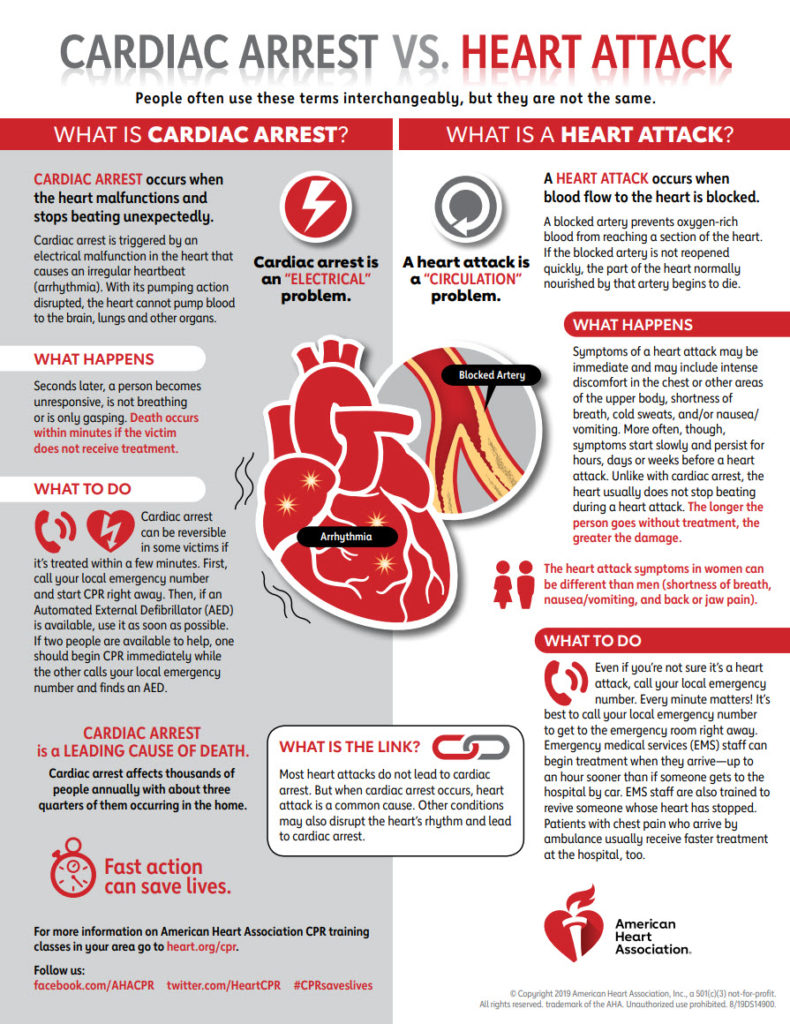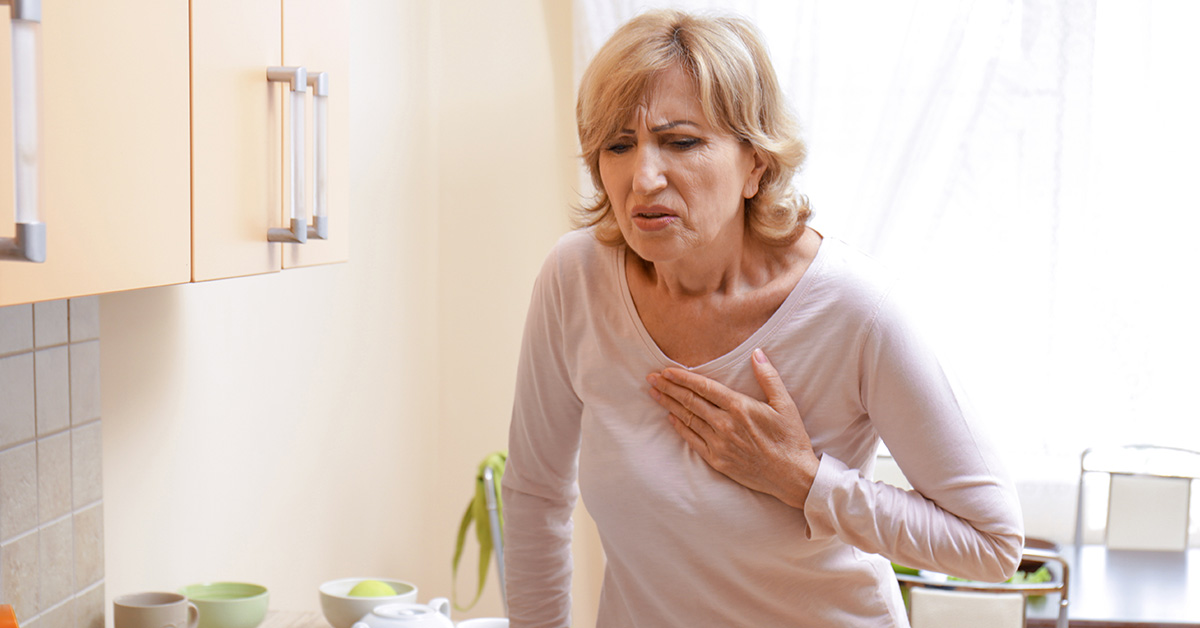Heart attack, cardiac arrest, and stroke are three of the most common causes of death globally. Despite this, few people actually know the difference between the three. Understanding and recognizing these differences could save your own life or someone else’s.
How to Know The Difference Between Heart Attack, Cardiac Arrest, and Stroke
Though heart attack, cardiac arrest, and stroke all have similarities and can be linked, they are not the same. It is critical that you know the difference so that you know what to do if you are someone around you who experiences one.
The Difference Between A Heart Attack and Cardiac Arrest
Many people use these terms interchangeably, thinking that they mean the same thing. Though connected, the two heart conditions are actually quite different.

What Is a Heart Attack?
A heart attack happens when you have a blocked artery. This blockage prevents oxygen-filled blood from reaching a section of your heart. If the blocked artery is not opened quickly, that section of the heart will begin to die. The longer this goes on, the more damage is done. (1)
What Is Cardiac Arrest?
Sudden cardiac arrest is caused by an electrical malfunction in the heart that causes an irregular heartbeat. Appearing suddenly and without warning, cardiac arrest disrupts the pumping action of the heart. The muscle can no longer pump blood to the lungs, brain, and other vital organs. A person experiencing cardiac arrest will lose consciousness within seconds and will not have a pulse. Without treatment, they can die within minutes. (1)
Cardiac arrest and heart attack are linked. They can occur after someone has had a heart attack and in people who have other heart conditions that affect the heart’s rhythm. (1)
Symptoms of A Heart Attack vs. Cardiac Arrest
Symptoms of a heart attack can be immediate and intense, but also slow and develop over hours, weeks, and even days. (1) They include (2):
- Intense discomfort in the chest or other areas of the upper body such as the left arm
- Shortness of breath
- Cold sweats
- Nausea and vomiting
Women usually experience different symptoms than men. (1) They will most commonly have (2):
- Shortness of breath
- Nausea and/or vomiting
- Back or jaw pain
A heart attack can cause permanent damage to the heart muscle. If it is in a large enough area, the person can die. (1)
Cardiac arrest will come on swiftly and suddenly. Within seconds the person will become unresponsive, will be gasping for breath, or not breathing at all. Their heart will not be pumping, and therefore they won’t have a pulse. (1)
What To Do
In both situations, someone should call emergency response immediately. In the case of cardiac arrest, someone knowledgeable should perform CPR right away until the ambulance arrives. If available, another person should get the nearest AED kit and use that until emergency response arrives on the scene. (2)
What Is A Stroke?
A stroke, also known as a “brain attack,” is when something prevents blood and oxygen from reaching your brain. They are often caused by a blood clot or a buildup of plaque in the arteries in your brain that block blood from flowing through. These are known as ischemic strokes. (3)
Another cause can be if a blood vessel in your brain ruptures. Called a hemorrhaging stroke, blood then leaks into surrounding tissues. (3)
If not treated quickly, strokes can cause permanent brain damage and death. (3)
Symptoms of a Stroke
The best way to remember the symptoms of a stroke is by using this acronym: FASTER (4):
F – Face drooping
A – Arm (or leg) weakness or numbness.
S – Stability, or the ability to remain balanced while standing
T – Talking, or the ability to speak clearly and comprehensively
E – Eyes, or the partial or full loss of vision in one or both eyes
R – React, aka call emergency services immediately
Other symptoms include a sudden, severe headache, confusion, and difficulty understanding people. Most symptoms will occur on only one side of the body. (5)
What To Do
The only thing to do is call your emergency number immediately (in North America, this number is 9-1-1). As best you can, take note of the time that the symptoms began so you can inform the dispatcher on the other end. (3)
What Causes Heart Attack, Cardiac Arrest, and Strokes
Though they are all different, many of their risk factors are the same. These include (3):
- High blood pressure
- High cholesterol
- Smoking
- Age
- Family history
- Sedentary lifestyle
If you have any of the above risk factors, it is important that you talk to your doctor about what you can do to better your chances of never experiencing any of these traumatic events. The best thing you can do? Eat well, exercise, don’t smoke, and get proper sleep. That’s right: Living a healthy, balanced lifestyle is the number one way to prevent a heart attack, stroke, or cardiac arrest from happening. (3)
Keep Reading: Scientist: Cannabis-Based Antibiotics Could Be Available Within Five Years
Sources
- “Heart Attack and Sudden Cardiac Arrest Differences” Heart
- “Stroke Symptoms: From FAST to FASTER.” Stroke
- “What are the risk factors?.” Healthline. James Roland. September 29, 2018.
- “Stroke Symptoms: From FAST to FASTER.” Beaumont. (Facial%20drooping,the%20United%20Kingdom%20in%201998.
- “The Difference Between a Heart Attack, Stroke, and Cardiac.” Self. Korin Miller

